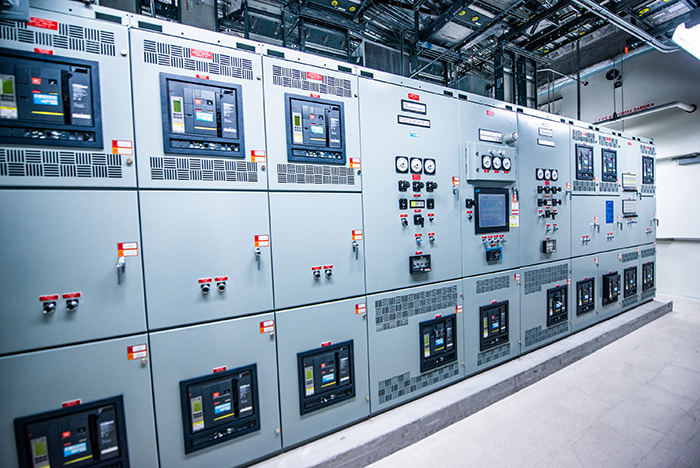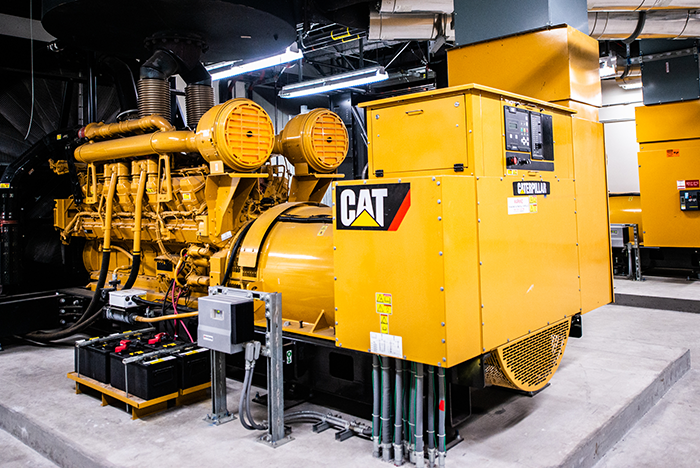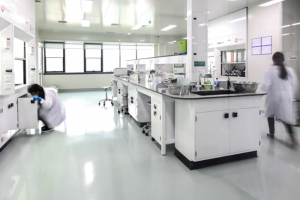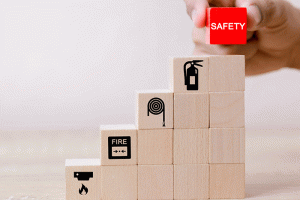Understanding the NEC and its health care applications

Electrical system requirements for health care facilities can be found in various documents, often causing confusion for code users.
Image courtesy of ASHE
Electrical codes and their applications within health care facilities can be difficult to navigate. The National Fire Protection Association’s NFPA 70®, National Electrical Code® (NEC), contains requirements that differ based on building type and occupancy classification. These distinctions are important but often cause confusion among code users. Key differences in requirements for backup power systems are detailed in the NEC’s Article 517, Health Care Facilities; Article 700, Emergency Systems; Article 701, Legally Required Standby Systems; and Article 702, Optional Standby Systems. Understanding these differences is critical for the safety of patients and staff in health care facilities, and grasping background on the NEC and other NFPA codes and standards pertinent to electrical systems is the first step toward that understanding.
The NFPA is a nonprofit organization that develops more than 300 codes and standards that are adopted across the country. They are the industry standard code-making authority for many building applications, not just health care. Focusing on backup power systems in health care facilities, the most applicable codes and standards within NFPA’s extensive list are NFPA 70; NFPA 99, Health Care Facilities Code; and NFPA 110, Standard for Emergency and Standby Power Systems.
NFPA 99 is the parent code and is intended to address the design of electrical systems in health care facilities, while NFPA 110 governs the installation, design and maintenance of emergency and standby power systems. While these two codes work in concert, NFPA 99 often extracts pertinent NFPA 110 requirements and adapts them for the unique requirements of health care.
Then there’s NFPA 70 or the NEC, which is primarily a document governing the installation and operation of electrical systems and typically updated on a three-year cycle. This article will discuss the 2023 version of the NEC, but it is important to note that the Centers for Medicare & Medicaid Services recognizes the 2012 edition of NFPA 99, which references the 2011 edition of the NEC. There are some differences between these editions of the NEC, but the intent of this article is applicable to both editions.
Defining articles 700, 701 and 702
In Article 700, Emergency Systems, the NEC covers “circuits and equipment intended to supply, distribute, and control electricity for illumination, power, or both, to required facilities when the normal electrical supply or system is interrupted.” Generally, these systems power egress lighting, fire alarm systems and powered egress doors in the event of a normal power outage — loads that are critical to keeping humans safe.
Article 701, Legally Required Standby Systems, differs from Article 700 in that it applies only to loads that are not intended for life safety but are mandated by code or an authority having jurisdiction (AHJ). Article 701 ensures that there is an alternate power source to maintain building occupant safety or aid emergency responders. Examples of this in health care are smoke removal systems and certain types of laboratory exhaust systems. In certain government buildings, visitor screening equipment, security systems and building automation systems also fall under Article 701. The loads required on legally required standby systems vary across building occupancies and uses due to the various AHJ requirements and codes that may apply.
Article 702, Optional Standby Systems, governs the least critical loads. These systems are not determined by any code but rather are opted into by owners, designers and operators. Outside of the systems defined in Article 517 (which is discussed in the next section), almost any load that is not required to be on an article 700 or 701 system could fall under the optional standby system. The requirements in articles 700, 701 and 702 are intentionally broad and written to apply to a wide spectrum of buildings.
NEC specifications for health care
Article 517, Health Care Facilities, of the NEC applies to “buildings, portions of buildings, or mobile enclosures in which human medical, dental, psychiatric, nursing, obstetrical or surgical care is provided.”
Beyond backup power, Article 517 focuses on safety of all electrical systems that directly impact patient lives. Given the expanse of Article 517’s scope, there are quite a few requirements that are well beyond the scopes covered in articles 700, 701 and 702. The majority of the overlap lies within the requirements of Article 517’s Part III – Essential Electrical Systems.
Article 517 defines three power branches within an essential electrical system (EES): life safety, critical and equipment. The code is very explicit on what systems are permitted to be connected to the life safety branch. Only the systems essential to life safety that are listed below are allowed on this branch, with no exceptions:
- Circuits essential to life safety;
- Egress illumination and doors;
- Exit signs;
- Alarm and alerting systems;
- Generator accessories essential to operation; and
- Elevator cab lighting, communication and control systems.
The critical branch also permits only loads that are directly related to patient care. Compared to the life safety branch, there are opportunities to include more loads onto this system as required to ensure continuity in patient care, but consideration should be taken when applying loads to this system. A high-level summary of the permitted loads is as follows:
- Task illumination in select spaces;
- Select fixed equipment;
- Select receptacles in patient care spaces, medication preparation spaces, pharmacy dispensing spaces and nurses stations;
- Spaces where deep sedation or general anesthesia is administered;
- Nurse call systems;
- Clinical information technology network equipment; and
- Additional circuits as needed for effective facility operation.
The third branch of the EES, the equipment branch, also has a prescribed set of permitted loads and is allowed to transfer to the alternate power source after the transfer of the life safety and critical branches. The equipment branch has two subcategories: equipment for delayed automatic connection and equipment for delayed automatic or manual connection. A partial list of loads permitted on the equipment branch includes:
- Equipment for delayed automatic connection
- Central suction and compressed air for medical and surgical functions;
- Smoke control and stair pressurization systems; and
- Supply, return and exhaust ventilating systems for select spaces, including telecommunications rooms.
- Equipment for delayed automatic or manual connection
- Heating equipment for select spaces;
- Hyperbaric and hypobaric facilities; and
- Elevators under specific conditions.
An optional branch also is permitted to be connected to the EES via separate transfer switches from the other three defined branches.
Key differences in article 517
One of the key differences between the load systems described in the NEC is the system capacity requirements of each.
Article 700, Emergency Systems, and similarly Article 701, Legally Required Standby Systems, require the emergency system to have adequate capacity for the code-calculated load. Article 517 uses different language and allows for variability in the system sizing. Alternate power sources serving an EES must have capacity to meet the maximum actual demand likely to be produced by the connected load. Additional calculation methods of that demand, including prudent demand factors and historical data, are provided in the code. The additional calculation methods for health care facilities make sense given that Article 517 is for a very specific use case, with a large existing data set to reference.
There are many similarities between loads permitted on the life safety branch of an Article 517 system and a system held to the requirements of Article 700. Because of the similarities, Article 517 requires that the life safety branch comply with the requirements of Article 700 with several key exceptions. Article 700 is very generic and must cover all other applications, which is why additional differences between the life safety branch and Article 700 are listed in the code. Article 700 is written such that the emergency system is the only “essential” electrical system included, but in health care facilities, the entire EES is needed for patient safety, even if the life safety branch takes priority. Article 517 rewrites several of the requirements in Article 700 to ensure that all the EES is protected and reliable.
Article 701 loads are similar to the loads placed on the equipment branch of a health care EES. These loads are not traditional emergency or life safety loads but are still needed for safety in a larger sense. Article 517 overrides the requirements of Article 701 largely by defining what loads in a health care application may fall within this category and provides the requirements that make sense in a health care facility — prioritizing safety within the context of patient care. Beyond the system sizing difference described above, one of the key differences is system startup time. Article 701 mandates that the alternate power source must have power restored within 60 seconds. The equipment branch has no such time constraint as the priorities are the life safety branch (think evacuation) and the critical branch (think keeping patients alive and healthy).
Articles 700, 701 and 702 do not address the specialized medical equipment and life support systems needed for patient care, which are included in the critical branch. This branch has a set of requirements that improves the consistency of power delivered to equipment that is not considered elsewhere in the NEC. One such example is the separation of wiring. Article 700, Emergency Systems, are required to have independent raceways from other circuits. This is applied to both the life safety and critical branches in Article 517 to improve circuit continuity and protection from failure.
No vast differences are present between the Article 702 systems and the optional branch systems that are permitted in an EES. Article 517 mandates how these systems may be connected and controlled in a health care facility, but the system is largely the the same as it would be in any other facility. Again, the priority is ensuring critical services are maintained during a loss of the primary power source.
Bridging code crossover
It is understandable that the EES requirements defined in Article 517 of the NEC appear to have crossover with the requirements for emergency, legally required standby and optional standby systems that are defined in articles 700, 701 and 702, respectively. These systems are not all that different in the grand scheme of electrical systems, but special care is taken within health care facilities to ensure the safety of patients and providers, given the specialized equipment and processes used in these facilities.
The unique condition of the spaces that are served by essential electrical systems defined in Article 517 are not prevalent outside of health care, and generic building requirements could introduce significant risks in patient care settings. Therefore, it is crucial that NEC users understand when to apply Article 517 versus other NEC articles to ensure proper compliance and safety measures are met.
Connor Frazier, PE, is the California electrical engineering lead for HGA Architects and Engineers based in San Francisco. Frazier serves on the National Fire Protection Association’s NFPA 70, National Electrical Code (NEC) Technical Committee – Code Making Panel 15, which has purview over the NEC Article 517, Health Care Facilities.





